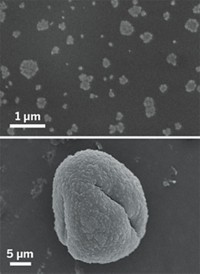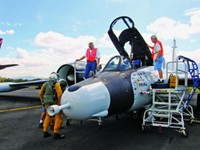Advertisement
Grab your lab coat. Let's get started
Welcome!
Welcome!
Create an account below to get 6 C&EN articles per month, receive newsletters and more - all free.
It seems this is your first time logging in online. Please enter the following information to continue.
As an ACS member you automatically get access to this site. All we need is few more details to create your reading experience.
Not you? Sign in with a different account.
Not you? Sign in with a different account.
ERROR 1
ERROR 1
ERROR 2
ERROR 2
ERROR 2
ERROR 2
ERROR 2
Password and Confirm password must match.
If you have an ACS member number, please enter it here so we can link this account to your membership. (optional)
ERROR 2
ACS values your privacy. By submitting your information, you are gaining access to C&EN and subscribing to our weekly newsletter. We use the information you provide to make your reading experience better, and we will never sell your data to third party members.
Environment
Minor Dust Mineral May Be Key Ice Seed
Atmosphere: Feldspars found to be good seed for ice crystals in clouds
by Puneet Kollipara
June 14, 2013
| A version of this story appeared in
Volume 91, Issue 24

In clouds, mineral dusts and other aerosols catalyze the freezing of water droplets into ice crystals. Scientists have long thought that clays, the largest component of mineral dusts, are the best ice nuclei among the subset of aerosols.
But now Ben Murray of the University of Leeds, in England, and coworkers report that silicates known as feldspars, a minor dust component, may be better than clay minerals at seeding ice formation in certain weather-influencing clouds such as stratus and storm clouds (Nature 2013, DOI: 10.1038/nature12278).
Ice formation determines several cloud properties, such as size, lifetime, precipitation potential, and ability to scatter radiation. Aerosols that seed ice formation therefore play an important role in climate and weather, and researchers factor ice nucleation into climate and weather models. But a dearth of data on the sheer variety of aerosols has made it difficult for researchers to know which are the best nuclei.
In the lab, Murray and colleagues infused micrometer-size water droplets with different minerals and measured the temperatures needed to freeze half of the droplets in each group.
Droplets containing potassium-rich feldspar, 3% of mineral-dust mass on average, froze most easily, with half freezing at 251 K, the researchers found. Calcium- and sodium-rich feldspar, together 8% of mineral-dust mass, froze at 247 K, quartz at 243 K, and calcite and clay minerals at 237 K. The study suggests potassium-rich feldspars are the most effective nuclei not only in the lab but also in atmospheric dust, even after accounting for their relatively low abundance there.
Major uncertainties and assumptions go into modeling dust emissions, particle size, and nucleation, which makes it tough to draw broad conclusions on real-world nucleation from this study, comments Ryan Sullivan of Carnegie Mellon University. And because past studies suggest clay minerals are the best nuclei, “I would not discount the role that clay minerals play in ice nucleation based on just this paper,” he says. Still, the new results could be important findings if confirmed by future studies, he adds.




Join the conversation
Contact the reporter
Submit a Letter to the Editor for publication
Engage with us on Twitter